Industrial machine vision cameras are reliable and robust, so must be the external triggering system.
When fast operation is needed, the trigger sensor needs to react very quickly. The trigger sensor will change the voltage (electricity) on the specified pins of the camera’s I/O connector.
This system works with the so-called rising edge or falling edge, voltage going from a low value to high (rising edge), or from high to low (falling edge).
By doing so the camera will respond very fast on the trigger sensor triggers.
Programming the camera to accept triggers from trigger sensor
You can program a machine vision camera to accept triggers from the trigger sensor. Using our cameras, you will need to use our Galaxy SDK software. When you are connected to the camera you can program your trigger source:
Step one, activate trigger mode by setting TriggerMode = On:
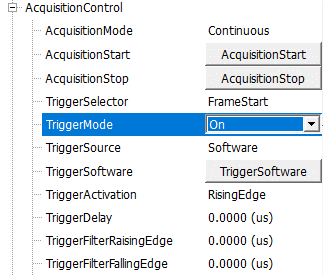
Step two, trigger source. When you select software, camera is triggered when pressing the “TriggerSoftware button”.
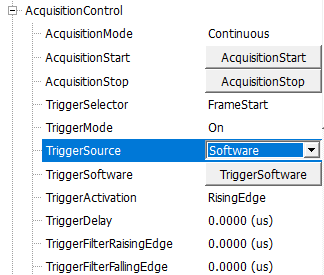
To use a trigger sensor instead, you need to select the input line where the trigger will be received, e.g., line0

The camera is now setup and ready to be triggered on the line0 input.
You can further adapt and optimise the trigger settings by defining RisingEdge, FallingEdge, TriggerDelay and TriggerFilters (to prevent noise on the trigger signal causing an undesired trigger)

Schematic of trigger sensor connected to the machine vision camera.
In our schematic we use the following trigger sensor
Retroreflective photo sensor S100-PR-5-C10-PK to hardware trigger the machine vision camera. When an object interrupts the sensor’s reflected light beam, power is let trough it towards the camera’s input pin.
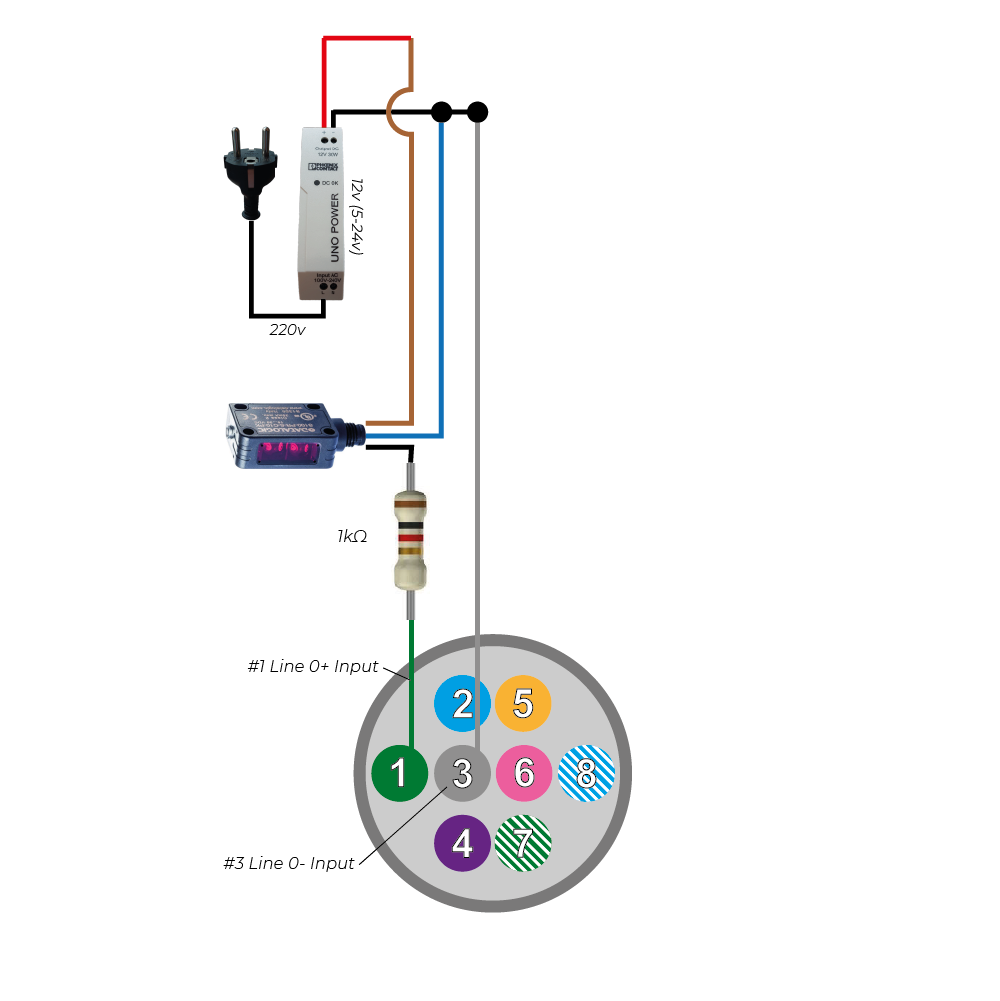
Schematic of a foot pedal connected to the machine vision camera.
In our schematic we use the following foot pedal
Foot Switch FS-01 to hardware trigger the machine vision camera. The foot switch could be replaced by any other analog Toggle switch (going from open to close)
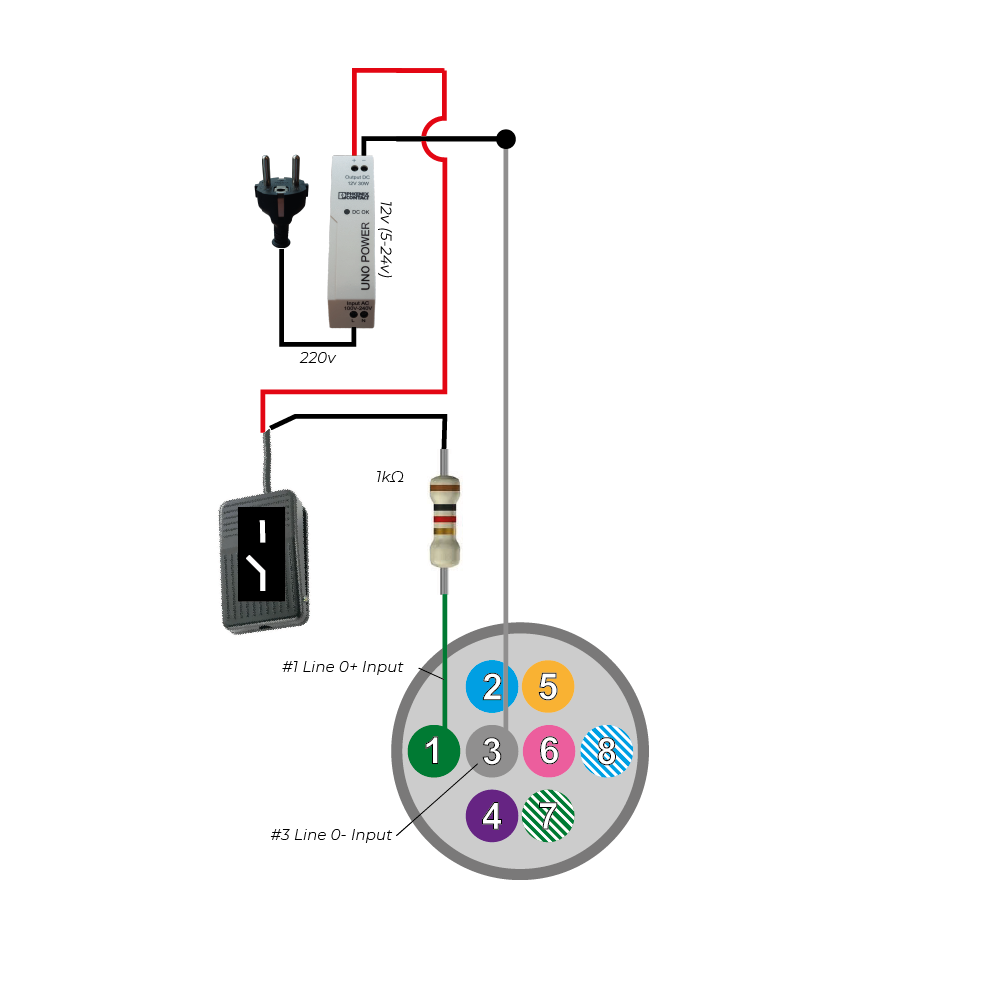
Using a machine vision camera to trigger a strobe and light.
To trigger a light source, you can associate the “strobe” function to one of the 3 outputs. In our case we define Line1 as output and put the LineSource on Strobe.
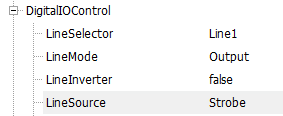
Now the output is defined as a Strobe Output, the Strobe Output will provide a high voltage signal when all camera pixels are ready to capture light. The signal will be low when none or only a part of the pixels are ready to capture.
When using a global shutter camera all pixel a ready to capture light at the same moment. For a Rolling shutter camera, you have to wait approx. 1/framerate (so with 50fps 1/50=20ms) before all pixels are ready to capture light and the trigger signal will become high.
As a result, the strobe signal of a rolling shutter camera will only work with exposure times that are > 1/framerate.
Using a machine vision camera to trigger a second camera (Master/slave setup)
Here below a connection example of MASTER camera being trigger by a photocell, and SLAVE camera synched to the master camera.
When the trigger sensor is activated, the output voltage of the trigger sensor will be high and as a result input PIN1 of master camera will be high.
Once there is a rising edge on pin 1 of the MASTER camera, the camera will OPEN the contact between pin 7 and 8 as soon as all pixels are ready to capture light. As default pins 7 and 8 are NC= normally closed.
- When the contact between pin 7 and 8 is closed, the voltage on pin 7 and pin 8 of the MASTER camera is low and therefore pin 1 of the SLAVE camera is low. The current will flow from the 24V power, through the 1K resistor (used to limit the current), through pin 8 of the master camera and then pin 7 of the master camera back to the ground of the power supply.
- When the contact between pin 7 and 8 is open, the voltage on pin 7 will be low. The voltage on pin 8 of the master camera will be high. The voltage of pin 1 of the slave camera will also be high now. The current will flow from the 24V power, through the 1K resistor (used to limit the current), through pin 1 of the slave camera to pin 3 of the slave camera back to the ground of the power supply.
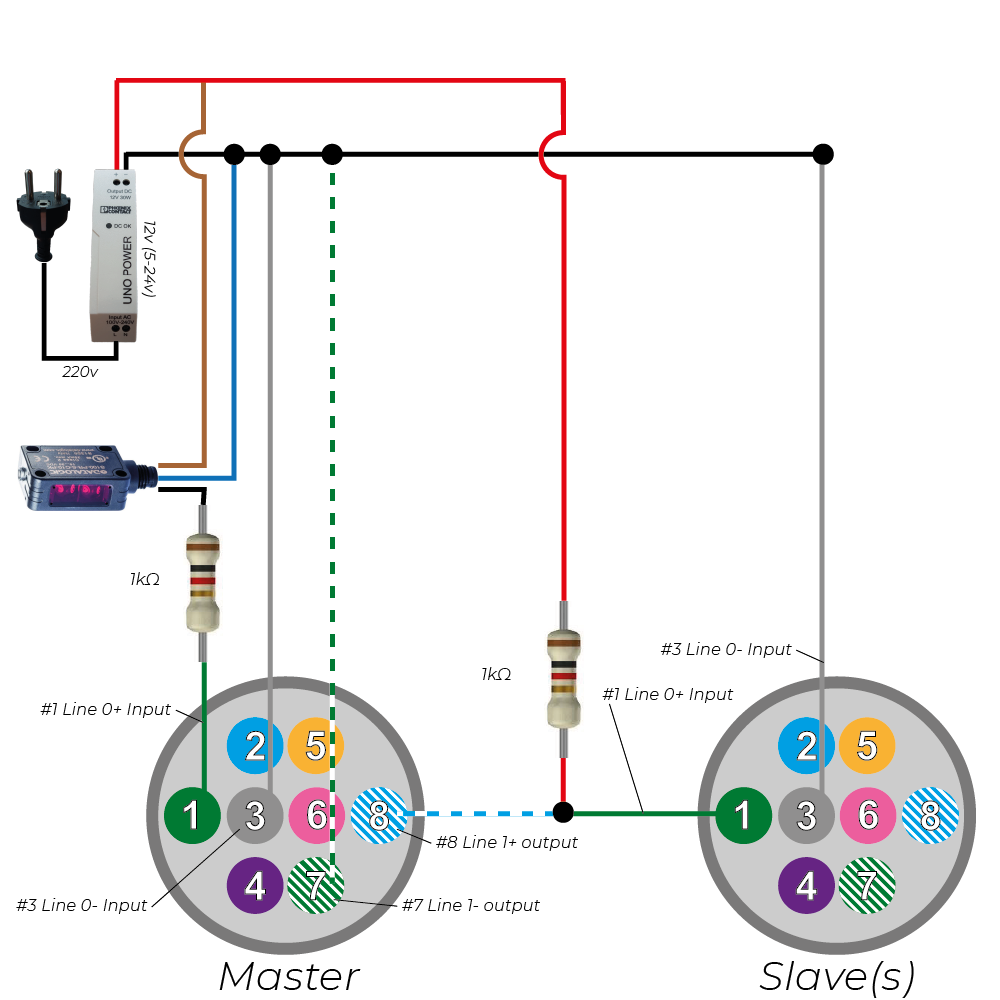
Using a machine vision camera to trigger a light source camera.
The machine vision camera can also trigger an external light source, using our strobe controller. Here the schematic of a camera triggering an external strobe controller with a LED light. Furthermore, an analogue pedal switch is also connected.
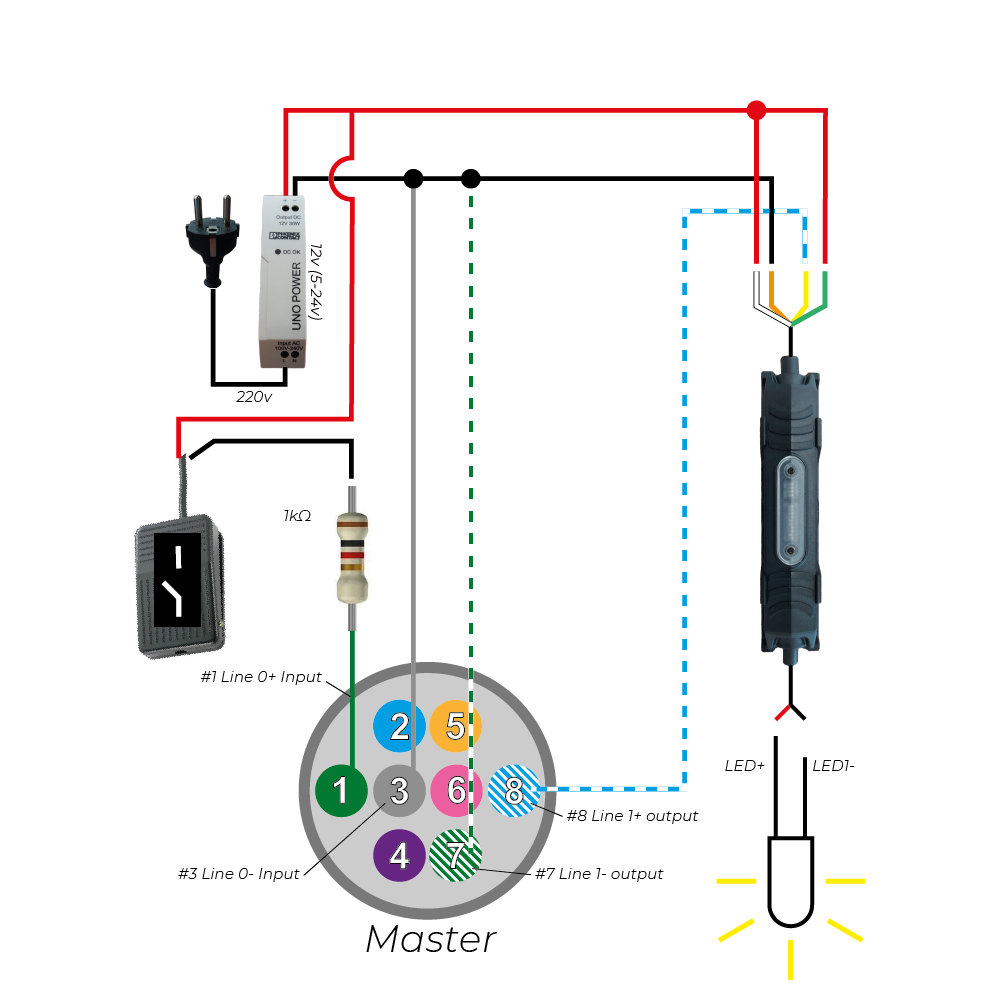
I/O Port camera
Please note that a GigE camera has a slightly different pin-out than a USB3 camera. A GigE camera has the option to power the camera using the I/O connector while this is not the case for USB3. USB3 will always use the voltage of the USB bus to power the camera. This will not have an influence on the above schematics to trigger a camera. To connect a trigger cable, you need a trigger cable with a HR25-7TP-8S plug.
MER2 GigE Camera I/O
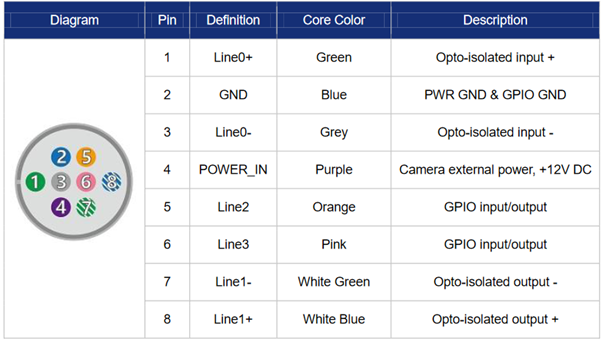
MER2 USB3 camera I/O
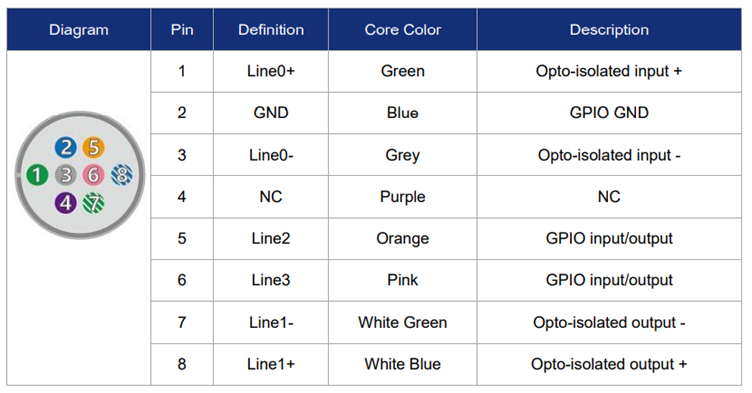
Advanced trigger functions
We always advice to use line 0 as camera input and line 1 as camera output. These lines are optically isolated, and they work on the following voltages:
- Logic 0 voltage: 0V~+2.5V (Line0/1 voltage) -> no action
- Logic 1 voltage: +5V~+24V (Line0/1 voltage) -> action
- Minimum current is 7ma and maximum current is 25ma. To limit the current a current limiting resistor is recommended above 9V.
If you need more inputs/ outputs you can use Line 2 or 3. These are not optically isolated, but you can program each line as an input or as an output. They work on the following voltages:
- Logic 0 input voltage: 0V~+0.6V (Line2/3 voltage) -> no action
- Logic 1 input voltage: +1.9V~+24V (Line2/3 voltage) -> action
- When LIine2/3 is configured as input, pull-down resistor over 1K should not be used, otherwise the input voltage of Line2/3 will be over 0.6V and logic 0 cannot be recognized stably.
- To avoid the damage of GPIO pins, please connect GND pin before supplying power to Line2/3.
Synchronization of 1 master camera with 4 slave cameras without external power supply.
It is possible to have one camera (master) triggering additional cameras (slaves) without an external power supply, by setting line 2 and line 3 as OUTPUT. See schematic below.
When line 2 and 3 are configured as output, they provide a 3.3V output signal. The output voltage is sufficient to trigger slave cameras. The slave cameras line 2 is set as INPUT (Logic 1 input voltage > +1.9V).
Using this method, multiple cameras can be synchronized without additional hardware.
It is to be noted that since the output voltage is 3.3V and the minimum voltage needed for triggering is 1.9V, the I/O cable length should be kept as short as possible. Long cables (due internal cable resistance) may cause a voltage drop and as a result the received input voltage can drop below the critical level of 1.9V and be insufficient to trigger the slave cameras. Therefore, an external power supply to increase the voltage output level is preferred to support longer cable lengths.
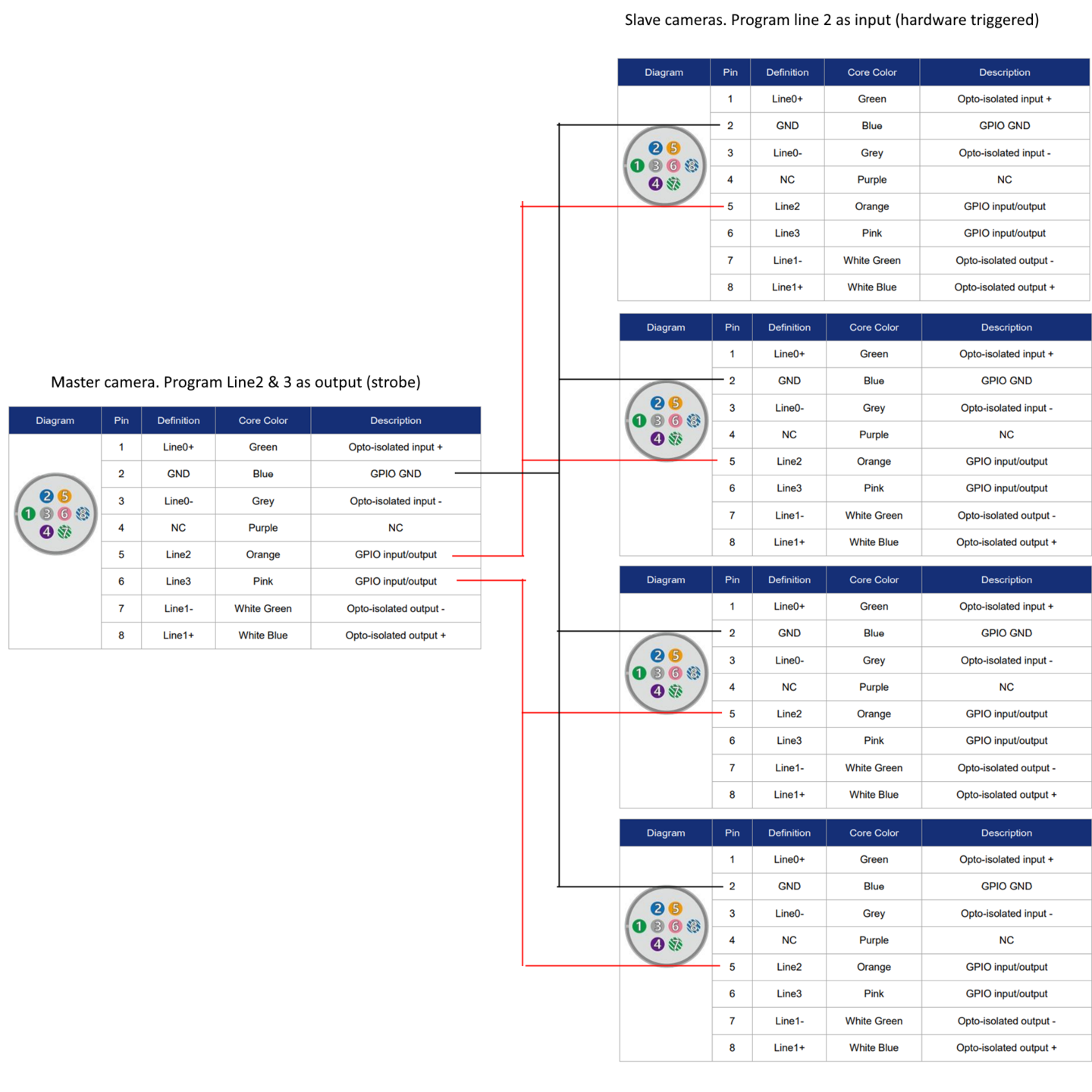
Furthermore, hardware trigger does have various characteristics and options to make the setup even more reliable.
Rising/Falling edge delay is the time the camera needs to “confirm” a trigger happened.
Frametrigger wait: The Camera output becomes high when the camera is ready to receive a new hardware trigger. Using this option, you can achieve the highest hardware trigger rate.
Input Debouncer: rising edge filtering and falling edge filtering, specifies the minimum duration of the pulse to be considered a valid signal. You can filter out noise from the trigger signal to prevent triggers caused by noise.
Trigger Delay: The time between the trigger is confirmed and the trigger action is executed.
Input Inverter: The user can select whether the input level is reverse or not by setting "LineInverter".
Do you need other I/O functions, like RS232 for your industrial camera?
If your specific application requires special functions for the I/O connector of the industrial camera, for example using the GPIO as a RS232 port, we can make customized firmware for you. Please contact us and we can help you with special I/O functions for your industrial camera.
Contact us!











